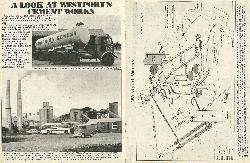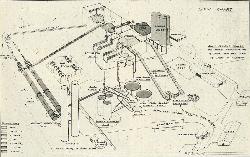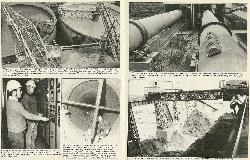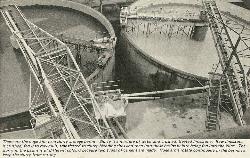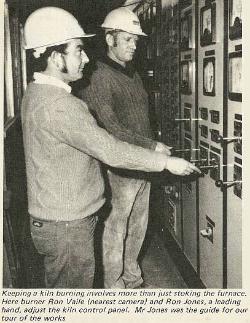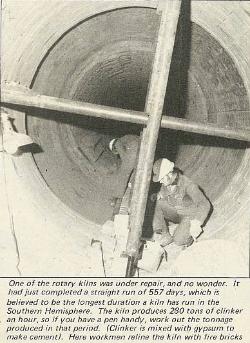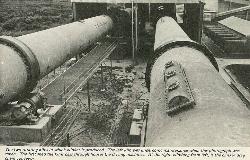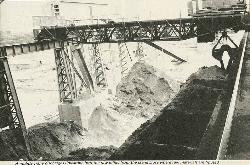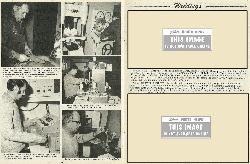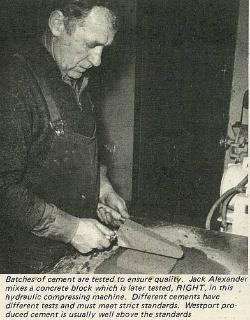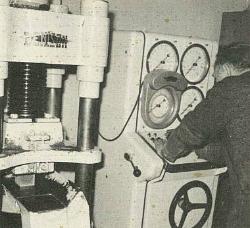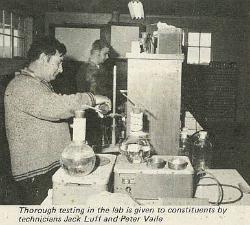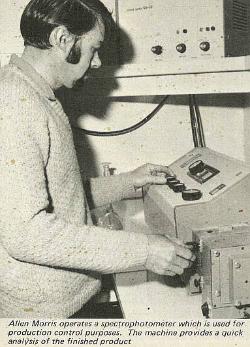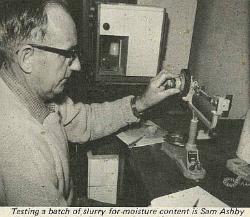35
Westport Works
An old sage once said that a picture is worth a thousand words. And we think the diagram reproduced here will save more than a thousand words. By following the flow chart readers will be able to trace the introduction of raw materials, limestone and marl from the quarry at Cape Foulwind, and gypsum, through to the cement stored in the silos where it is blown by compressed air from the grinding mills. We also suggest that as you see the photographs on the following pages dealing with the works you turn back to this chart to ascertain the position of the photographed objects in the overall layout.
36
These are the huge kiln feed slurry storage basins. Slurry is a mixture of water and crushed, treated limestone. Raw limestone is crushed, fed into raw mills, transferred to slurry blending silos and then into these basins before being fed into the kilns. The slurry in the basins is of different colours because two types of cement are made. Huge arms rotate continually in the basins to keep the slurry from setting
Keeping a kiln burning involves more than just stoking the furnace. Here burner Ron Vaile (nearest camera) and Ron Jones, a leading hand, adjust the kiln control panel. Mr Jones was the guide for our tour of the works
One of the rotary kilns was under repair, and no wonder. It had just completed a straight run of 557 days, which is believed to be the longest duration a kiln has run in the Southern Hemisphere. The kiln produces 280 tons of clinker an hour, so if you have a pen handy, work out the tonnage produced in that period. (Clinker is mixed with gypsum to make cement). Here workmen reline the kiln with fire bricks
37
The two rotating kilns in which clinker is produced. The left kiln was undergoing maintenance when this photograph was taken. The first shed the kilns pass through houses the driving machines. At the right, climbing from left, is the clinker drag chain conveyor
A mobile crane discharges limestone into the raw mills, from the crane store where raw materials are housed
38
Batches of cement are tested to ensure quality. Jack Alexander mixes a concrete block which is later tested, Right, in this hydraulic compressing machine. Different cements have different tests and must meet strict standards. Westport produced cement is usually well above the standards
Allen Morris operates a spectrophotometer which is used for production control purposes. The machine provides a quick analysis of the finished product
Thorough testing in the lab is given to constituents by technicians Jack Luff and Peter Vaile
Testing a batch of slurry for moisture content is Sam Ashby


